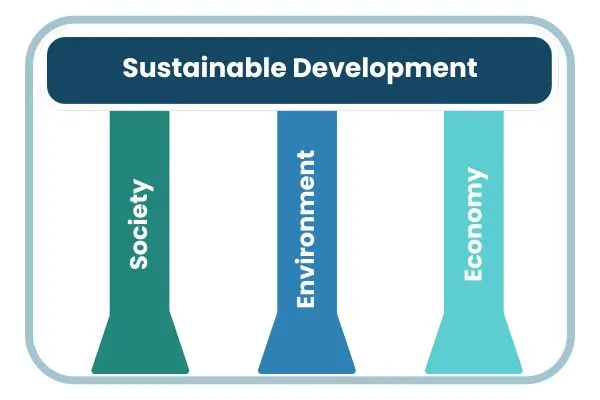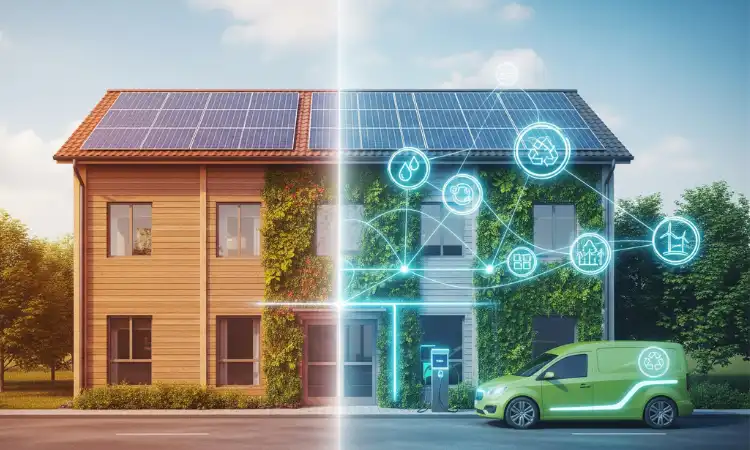How to Build a Sustainability Strategy: A Framework
A well-crafted sustainability strategy does more than just enhance your business reputation. It unlocks cost savings, attracts top talent, mitigates risk, and broadens your customer base. But where do you start?
This guide breaks down the process into three clear phases, providing a practical framework to help your business make a meaningful and measurable difference.
Phase 1: Laying The Groundwork

This initial phase is about understanding your starting point and defining what success looks like. It’s the essential groundwork for everything that follows.
1. Define Your Vision and Purpose
First, articulate a clear and compelling sustainability vision. This isn’t just a mission statement; it reflects your organisation’s core values and long-term commitment to environmental, social, and governance (ESG) principles.
Key Insight: Avoid generic statements. Your vision should be authentic to your brand and inspire action. For example, a tech company’s vision might be “To power the digital world with 100% renewable energy and create inclusive technology for all”.
2. Conduct a Baseline Assessment
You can’t improve what you don’t measure. Conduct a thorough audit of your current environmental and social impacts. Key metrics often include:
You can check out our Sustainability Fundamentals post for support understanding the key aspects of sustainability, and potential models you can use to help frame your assessment process.
Why it matters: This data-driven foundation is crucial for setting realistic goals and demonstrating progress. Use tools like the GHG Protocol for carbon accounting.
3. Engage Your Stakeholders
Your sustainability efforts don’t happen in a vacuum. Engage with key stakeholders. This includes employees, customers, investors, suppliers, and community members.
The aim is to understand their priorities and expectations. Surveys, interviews, and focus groups are all excellent methods.
Key Insight: Involving diverse voices from the start builds buy-in and ensures your strategy is comprehensive and supported.
4. Run a Materiality Assessment
You can’t tackle every issue at once. A materiality assessment helps you identify and prioritise the sustainability topics that are most significant to your business and your stakeholders.
Map out key sustainability challenges based on their impact on your business and their importance to stakeholders.
How to Fix It: Focus your resources where you can make the biggest difference. Is it water scarcity in your operational region? Data privacy for your customers? Fair labour in your supply chain? This focus is critical.
Phase 2: Action & Integration

With a solid foundation, it’s time to build your plan and embed it into the fabric of your organisation.
5. Set SMART Goals and KPIs
Turn your priorities into action with goals that are Specific, Measurable, Achievable, Relevant, and Time-bound. For each goal, define Key Performance Indicators (KPIs) to track your progress.
Example: Instead of “reduce waste,” a SMART goal would be: “Reduce solid waste sent to landfill from our manufacturing facilities by 50% by 2030, measured in metric tons per year.”
6. Integrate Sustainability into Operations
A sustainability strategy fails when it’s treated as a side project. True success comes from integration. Weave sustainability into every function:
Common Mistake: Keeping sustainability siloed in a single department. It must be a shared responsibility, driven from the top.
7. Create a Roadmap and Allocate Resources
Develop a detailed action plan outlining specific initiatives, timelines, departmental responsibilities, and required resources (budget, staff, technology). Assign clear ownership for each action item to ensure accountability.
Phase 3: Monitoring & Evolution

Sustainability is an ongoing process, not a one-and-done goal. This final phase focuses on transparency, learning, and continuous improvement.
8. Monitor, Report, and Communicate
Regularly track your KPIs and be transparent about your progress, both the wins and the challenges. Use dashboards for internal monitoring and consider publishing an annual sustainability report for external stakeholders.
Communicating progress can be a powerful tool in bringing your strategy to life and maintaining momentum.
Caution: Avoid Greenwashing! Trust is your most valuable asset. Be honest about your performance. Authenticity is far more credible than perfection.
9. Commit to Continuous Improvement
Your strategy must be a living document. The world is constantly changing, with new risks, technologies, and stakeholder expectations emerging.
Schedule regular reviews (e.g., annually) to assess your performance, re-evaluate your material issues, and adapt your strategy accordingly.
Remember, you’re aim is to continue progressing and improving. Don’t get caught up trying to figure out the perfect solution to every challenge, otherwise you’ll end up not moving forward at all.
Level Up Your Sustainability Strategy: Advanced Tips
Common Pitfalls to Avoid
|
Mistake |
Why It Happens |
How to Fix It |
|
Lack of leadership buy-in |
Seen as a cost centre, not a value driver. |
Build a strong business case showing the long-term ROI. |
|
Disjointed messaging |
Different departments are misaligned. |
Centralise communication and provide organization-wide training. |
|
Short-term thinking |
Intense pressure for immediate financial returns. |
Create a balanced portfolio of quick wins and long-term goals. |
|
Greenwashing |
Overstating positive impacts to gain favor. |
Commit to transparent, data-driven reporting (and third-party verification). |
|
Overlooking the “S” in ESG |
An over-emphasis on environmental issues. |
Integrate social metrics: diversity, equity, inclusion, and community well-being. |
Sustainability Strategy: Rethinking The Future

Building a sustainability strategy is a transformative act in any organisation. It requires courage, commitment, and a willingness to rethink ‘business as usual’.
But the rewards, long-term resilience, deeper stakeholder trust, and a positive legacy, are immeasurable.
Start today. Pick one area, your energy use, your packaging, your community engagement, and take the first step. It can be challenging, but it’s one of the most important actions your organisation will ever take.
To support you further, we recommend the following extra resources here at Greener Insights:
Setting Realistic Environmental Goals For a Business
How to Talk About Sustainability: 6 Practical Tips
Net Zero Business: A Simple Guide to Getting Started
Carbon Accounting: A Guide to The Basics
Finally, want more practical ideas and sustainability support?
Check in here at Greener Insights for regular updates, or follow us on our social media channels:
For direct support developing your sustainability strategy, you can contact us through our Contact & Collaborate page.






